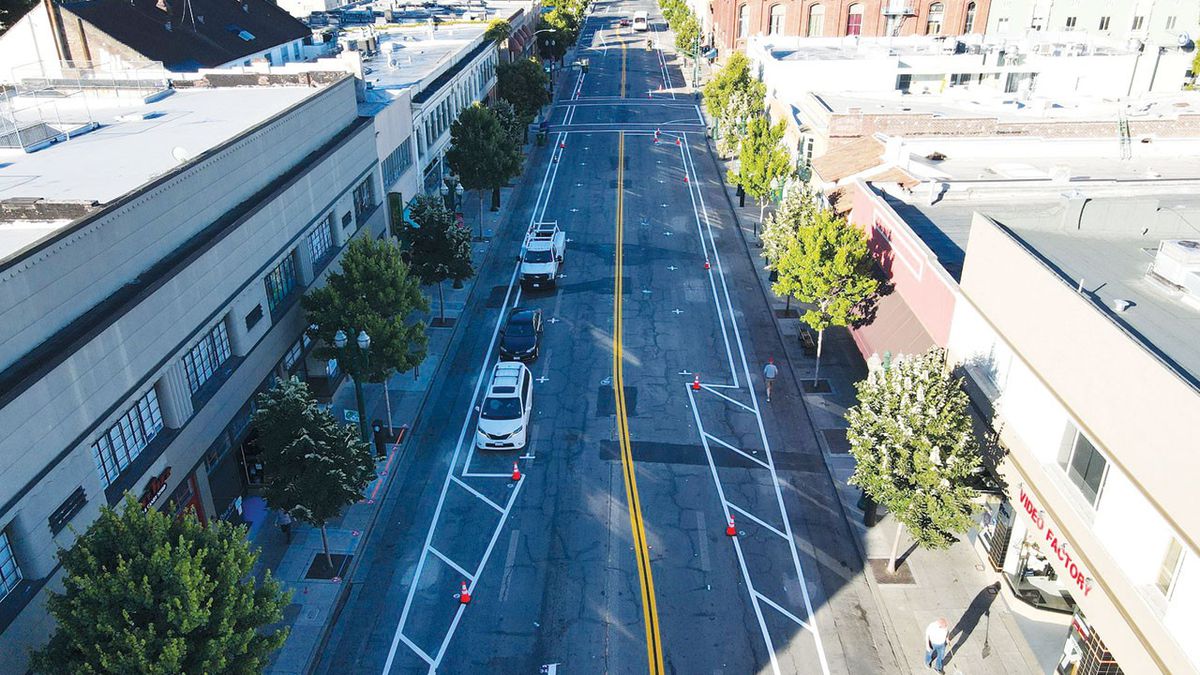At East Bay For Everyone, we believe that anyone who wants to live in the Bay Area should be able to afford housing, and that we can build enough housing at the right density to make this a reality. We’re committed to fighting onerous restrictions that cities have placed on building.
Alameda has arguably the most restrictive anti-development policy among East Bay cities. Passed in 1973, Measure A added a new amendment, Article 26, to the Alameda City Charter that banned the construction of multi-unit housing. In 1991, a second Measure A set the maximum density for one home per 2,000 square feet of area. Article 26 is more insidious than most other building restrictions because it even prohibits Alameda City Council from changing the city’s zoning, which most cities allow.
This election season, we wholeheartedly endorse Measure Z, which will finally give Alameda a shot to repeal Article 26, after nearly 50 years of exclusionary, anti-housing restrictions. It has long been argued that Alameda’s unique attributes necessitate the extreme step of embedding land-use policy in the City Charter. But repealing Article 26 will only be a first step in a lengthy process that will determine what Alameda looks like in the future, and the move will not result in immediate or drastic change.
Alameda’s beautiful and varied architecture, particularly its prized Victorians, will not suddenly be bulldozed after Measure Z. Alameda’s Historical Preservation Ordinance protects buildings deemed historically significant from being significantly altered without city review and approval, and Measure Z does not change the Historical Preservation Ordinance.
Measure Z opponents frequently raise concerns about traffic, citing the limited points of egress onto the island. But anyone who drives to work in San Francisco knows that traffic congestion is a regional issue. The most significant traffic bottleneck on the island—the morning commute through the Webster tube—is due to the fact that Alameda drivers are queued up behind vehicles accessing the Bay Bridge from all over the East Bay and beyond. Allowing more people to live in transit-rich inner suburbs like Alameda will only help to alleviate our regional traffic gridlock for those with no choice but to drive into the city.
Lastly, there seems to be a visceral fear among some Alamedans that repealing Article 26 will throw open the gates to greedy developers who will obliterate their quaint neighborhoods in search of profit. This will not and cannot happen. Alameda’s current zoning is compliant with the density limits imposed by Article 26, and once the City Council is able to initiate zoning reform, it will take years of study and public consultation before any change is enacted. Even then, the fact remains that the new, small-scale multifamily housing that will be permitted post-Article 26 will have plenty of company in the many beautiful, unique apartments Alameda already has.
Article 26 has been part of the City Charter longer than most Alameda residents have been alive, but that doesn’t make it immutable. A lot has changed since it was adopted in 1973, including our understanding of the urgent need to reduce carbon emissions, as well as the ways that restrictions on multifamily housing can produce racially disparate effects. Voting “Yes” on Measure Z won’t change Alameda overnight, but it will finally give Alamedans and their elected representatives the power to decide for themselves how best to add the new housing we all know is needed to create a better Alameda for everyone.
Liat Zavodivker and Josh Geyer are members of East Bay For Everyone. Opinions are the authors’ own and do not necessarily reflect those of the East Bay Express.












